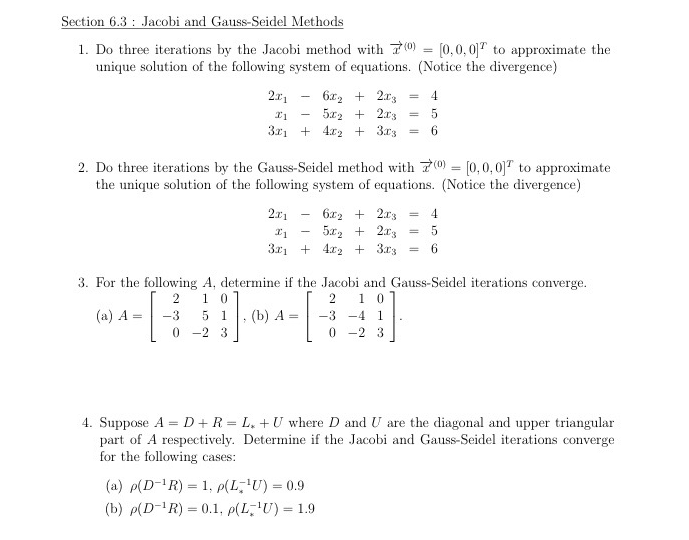
Small modifications in your algorithm can yield different results. This is different from the Jacobi method where all the components in. In the Gauss-Seidel method, the system is solved using forward substitution so that each component uses the most recent value obtained for the previous component. And Make a table on the number of iterations it took to converge the solution up to a tolerance of 1e-6 and comment on the results. The Gauss-Seidel method offers a slight modification to the Jacobi method which can cause it to converge faster. The Gauss Seidel convergence criteria depend upon the following two properties: (must be satisfied). Using the given matrix Write a python program for the solution of linear systems using Jacobi and Gauss-Seidel iterative solvers with L infinity, L1 and L2 norms. (Since recently obtained values are used in the subsequent equations).

Example 4. We can see, that for a value of $\omega\approx 0.38$ we get optimal convergence.Įven though this might be a little more than you asked for, I still hope it might interest you to see, that The Gauss Seidel method is very similar to Jacobi method and is called as the method of successive displacement. Gauss-Seidel Method¶ The Gauss-Seidel Method is a specific iterative method, that is always using the latest estimated value for each elements in (x). gence properties of the Jacobi and Gauss-Seidel methods can be drawn, as showninExample4.2. &3 & 1 & -2 \end-x$ for different values of $\omega$ on the x-axis, once for $0.01<\omega<2$ and in the second plotįor $0.01<\omega<0.5$.

With the spectral radius, you are on the right track.


 0 kommentar(er)
0 kommentar(er)
